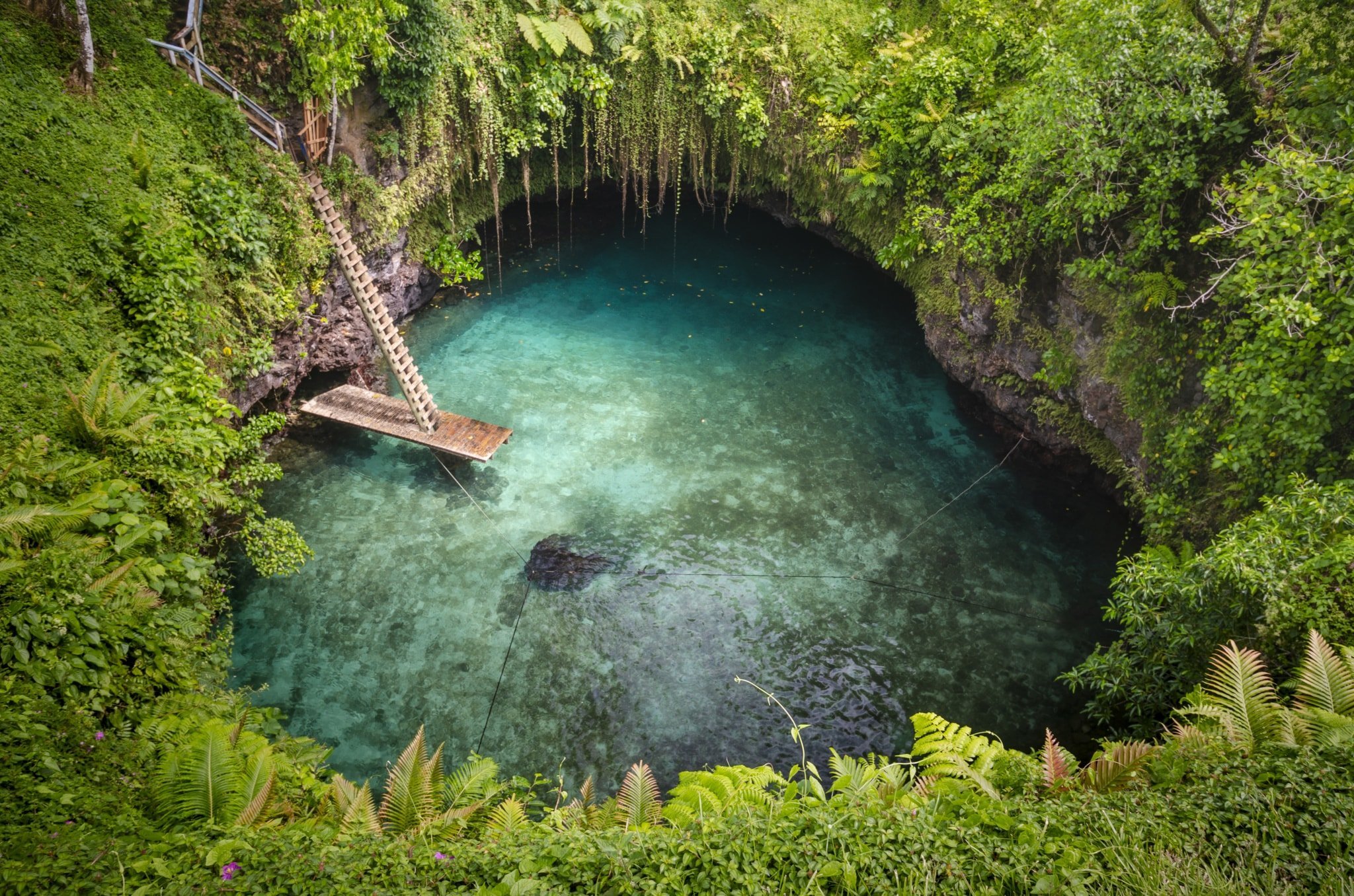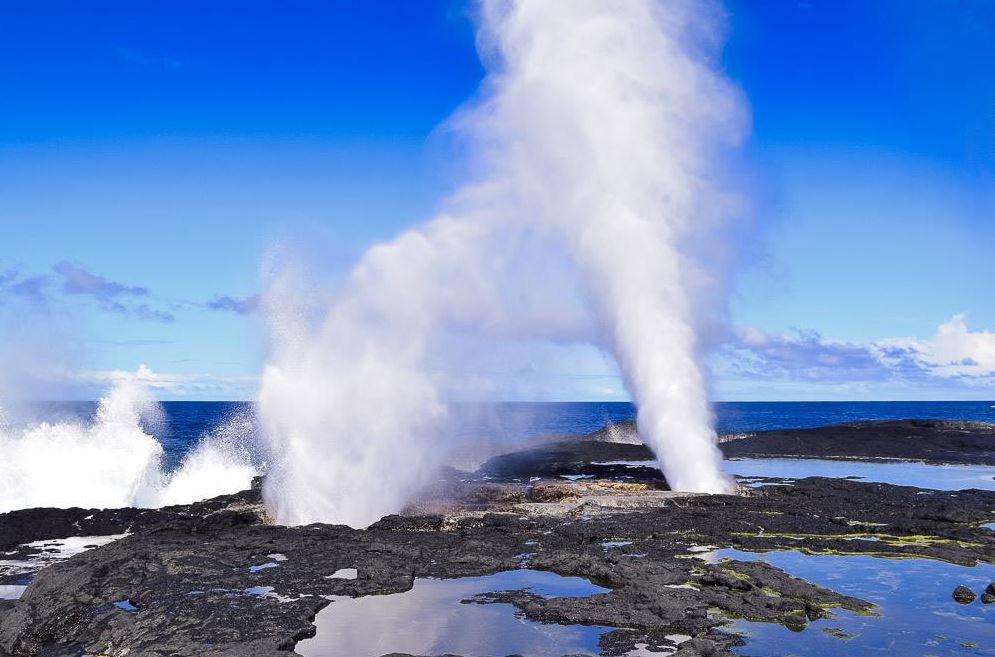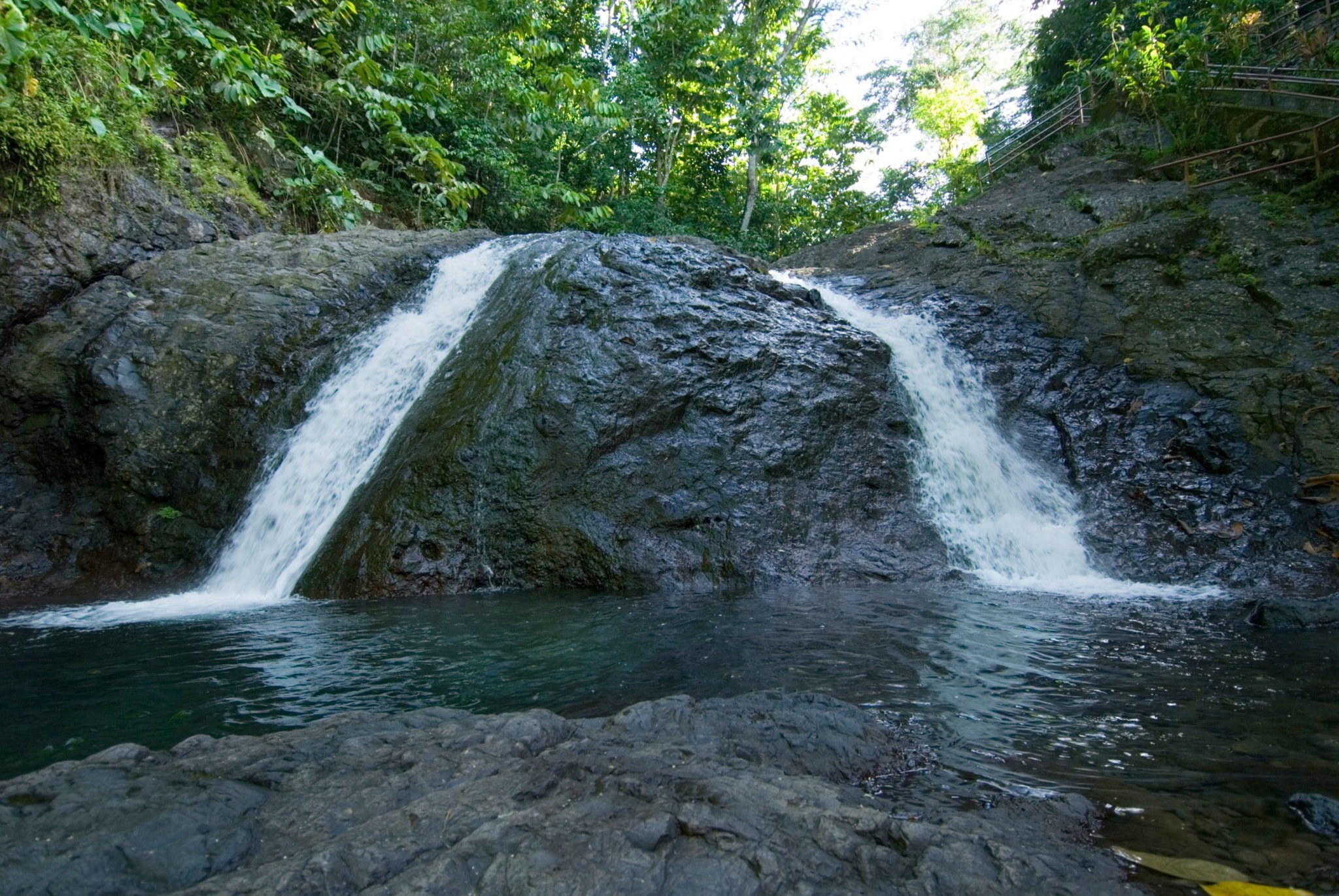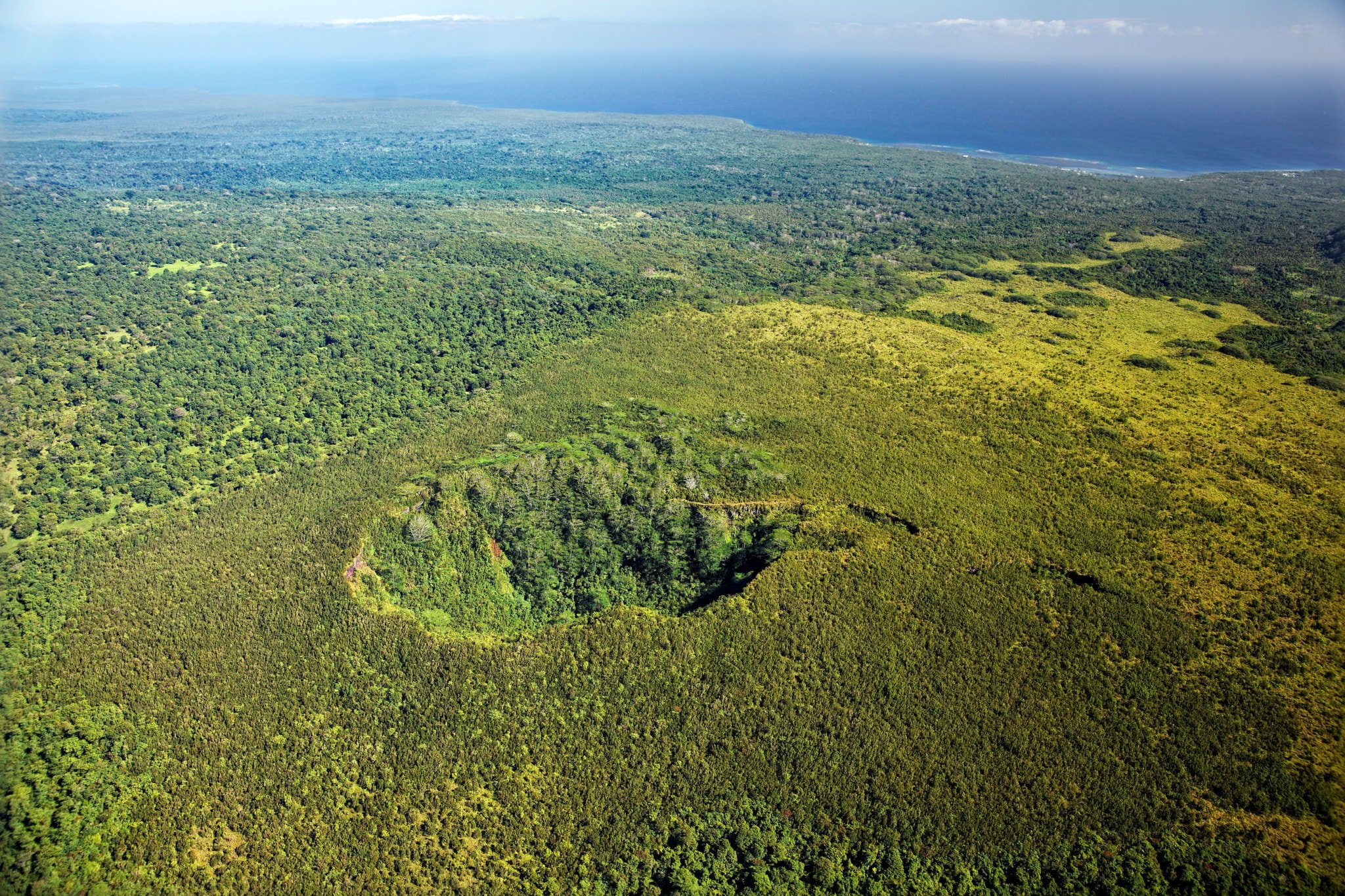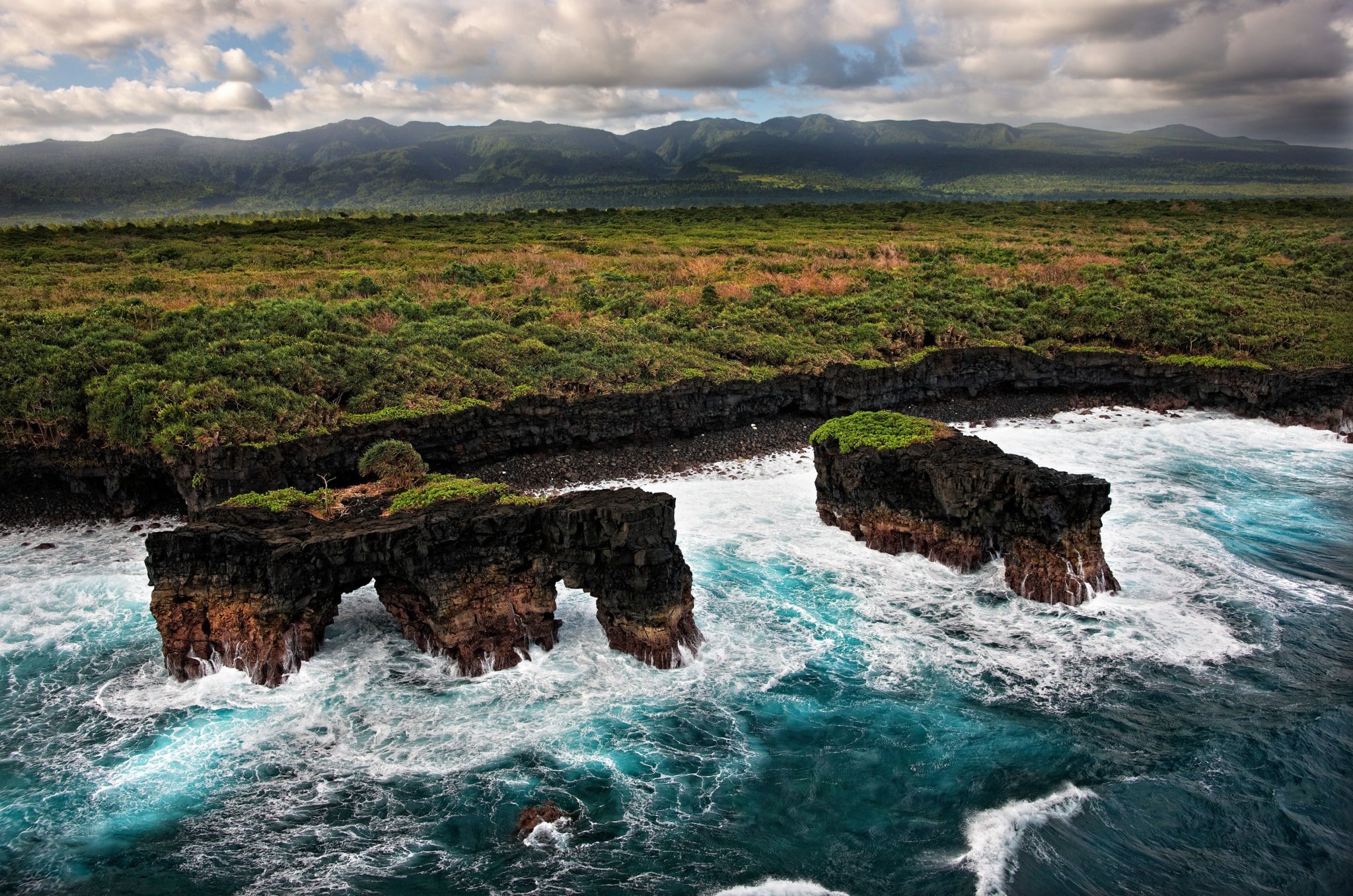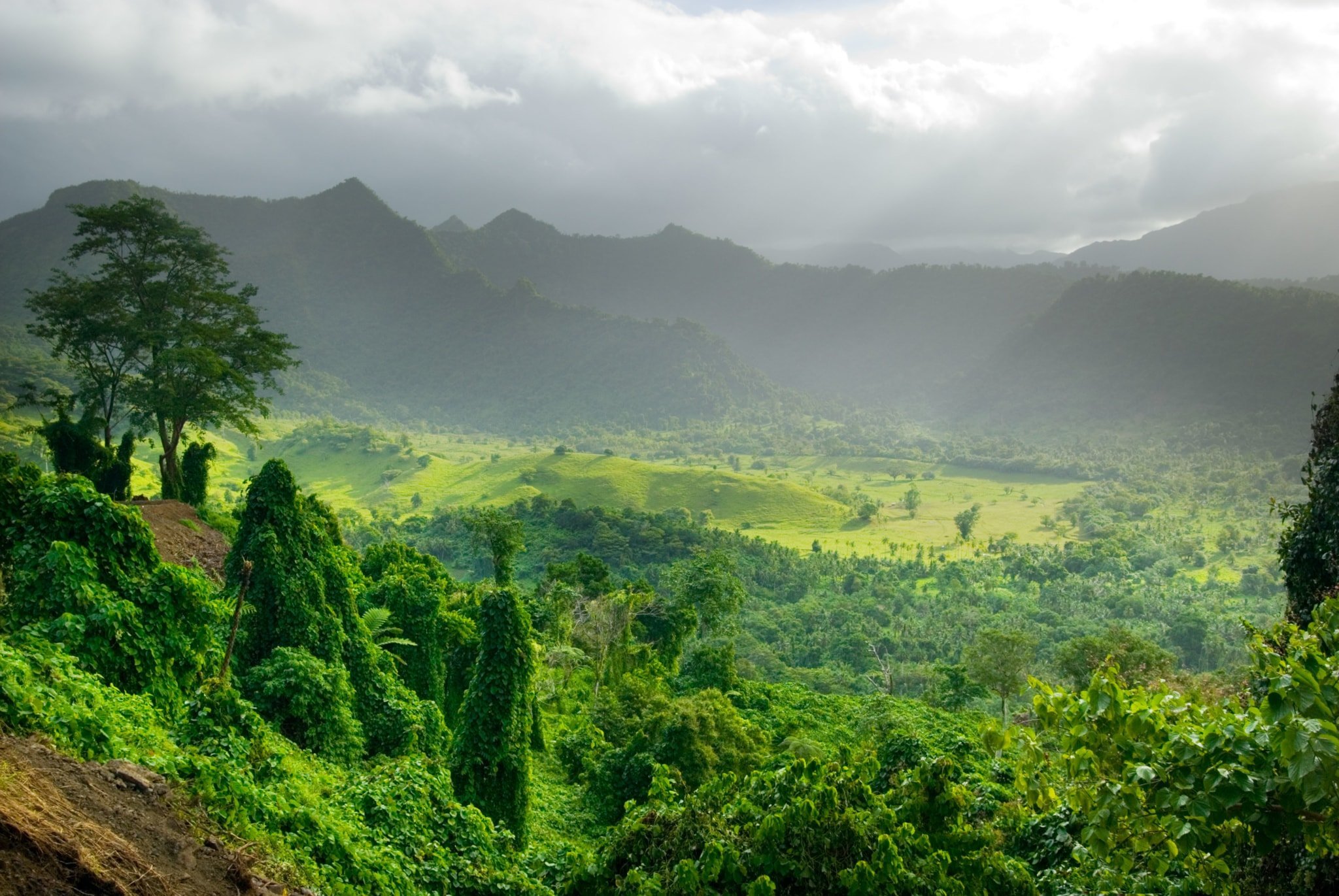Top 6 wild adventures in Samoa

If it’s wild abandon you’re seeking or entrée into a world of breathtaking natural beauty, then Samoa unfolds adventure after adventure. Renowned for its South Pacific waters, lush tropical forest and rich and engaging culture, it’s two main islands – angelfish-shaped Savai’i and grouper-shaped ‘Upolu – await.
Here are our top wild picks to explore during your visit.
1. To Sua Ocean Trench
There’s a reason this beauty tops pretty much every list of things to do in Samoa – it screams ‘wild and free’. Ridiculously photogenic , To Sua Ocean Trench looks more like a giant sinkhole than a trench, its sheer, green-draped rock walls plunge 20-plus metres to the intoxicating blue waters of the pool below. Climb down the precipitous but sturdy wooden ladder to the waterhole and when your skin is wrinkled beyond recognition, climb back up and take the short track to the wave-battered cliffs.
As enchanting as it is here, visitors to To Sua need to be careful: swimming through the underwater passage that feeds the waterhole from the sea is a big no-no, and if you’re with kids, beware of the child-sized gaps between the ground and the fence that circles the top of the trench.
2. Alofaaga Blowholes
Some of the most spectacular blowholes on Earth, and well worth going out of your way for, Alofaaga Blowholes have been formed over millennia by strong waves pushing through a series of lava tubes, causing geyser-like explosions that shoot 10-plus metres into the air. Villagers throw coconuts (for a fee: don’t pay more than ST10) into the blowholes, where they blast up like cannonballs: it’s thrilling stuff, but don’t get too close to the blowholes, no matter what the locals do.
3. Papase’ea Sliding Rocks
You’ll hear the fun being had before you see it at these natural slides – actually small waterfalls – that spill into refreshing waterholes. The longest slide is 5m; there are a couple of smaller ones at the bottom of the stairs (long and precarious). Check water levels during the dry season (make sure the pools are deep enough for sliding), but if not it’s still an inviting place to wash away the day’s heat.
4. Mt Matavanu Crater
An active volcano from 1905-1911, which sent molten lava flow flowing to the coast 13km to the north east, destroying everything in its path, the Mt Matavanu crater is a few hours bumpy ride by 4wd and then a 10-minute walk to the edge of the wooded crater. Be sure to stop short of the edge – there’s a vertiginous drop into the lush greenness below.
5. O Le Pupu-Pu’e National Park
Translating to mean ‘from the coast to the mountaintop’, O Le Pupu-Pe’e National Park (29sq.km) is filled with places to explore. Try the trail (six hours return) that winds through thick jungle to Pe’ape’a Cave, a large lava tube inhabited by pe’ape’a(swiftlets); you’ll need a torch. If you’re looking for a multi-day (three days return) hike, from here, continue along a heavily overgrown trail to Ofa Waterfall. For a less intense walk, the 700m Ma Tree Walk ends at a gigantic rainforest tree with huge buttress roots. On the park’s western boundary, a 3km unsealed access road delivers you to the rugged O Le Pupu Lava Coast, where a coastal track winds along lava cliffs, the bases of which are shaped by cracking waves.
6. Uafato Conservation Area
A wonderland of untouched rainforest that slides down hills and into the ocean, the 14sq.km Uafato Conservation Area boasts rare stands of ifilele (the tree used for the traditional carved ‘ava’ bowls), while animal lovers can observe numerous bird and bat species going about their aerial business.
Find out more about all these natural beauties at Samoa Tourism.
